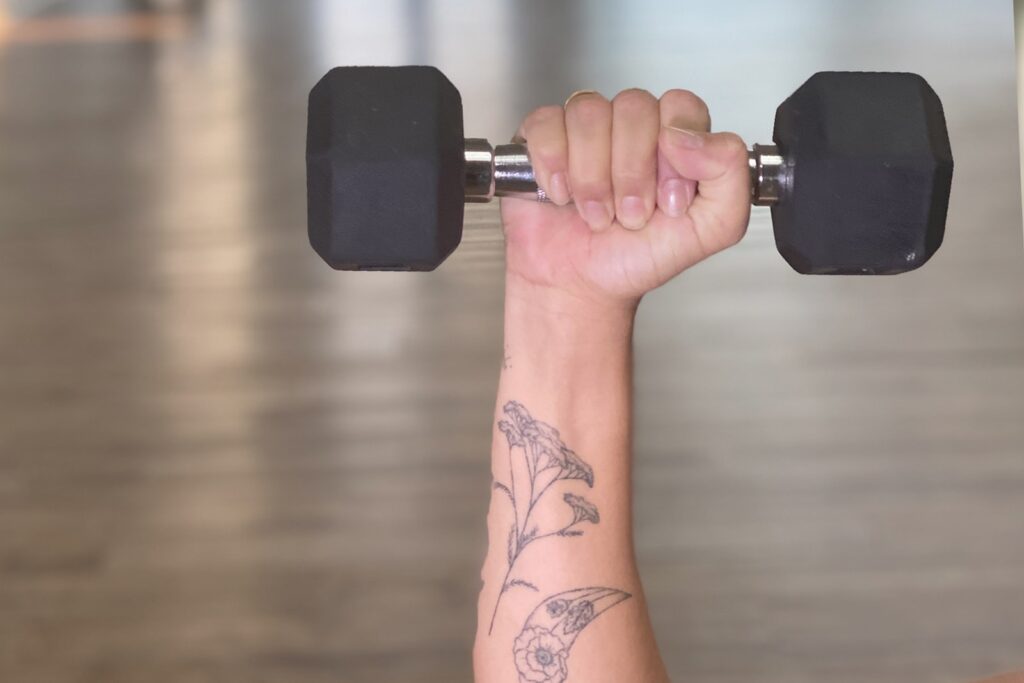Wrist pain is a common issue, but physiotherapy can help!
Wrist pain is a common problem that can be caused by many things. The wrist can be injured or irritated by overexertion, repetitive motions, and sports injuries. Wrist pain may also be caused by diseases such as arthritis, carpal tunnel syndrome and tendonitis.

What is wrist pain?
Wrist pain is a common problem that can be caused by a variety of factors. The most common cause of wrist pain is overuse. Other causes include arthritis, carpal tunnel syndrome, and tendinitis. Treatment for wrist pain depends on the underlying cause. In most cases, treatment involves rest, ice, and over-the-counter pain relievers. More severe cases may require physical therapy or surgery.
Causes of wrist pain
Most people experience wrist pain at some point in their lives. The causes of wrist pain vary, but there are several common factors that can contribute to this type of pain.
One of the most common causes of wrist pain is overuse. When we use our wrists too much, the tendons and muscles can become irritated and inflamed. This is often seen in people who work with their hands all day or who participate in activities that require repetitive motions of the wrist, such as tennis or golf.
Another common cause of wrist pain is arthritis. Arthritis is a condition that causes the joints to swell and can be very painful. There are many different types of arthritis, but the two most common forms that affect the wrist are osteoarthritis and rheumatoid arthritis.
How physiotherapy can help
If you have wrist pain, physiotherapy can help. Physiotherapy can help reduce pain and swelling, and improve range of motion. It can also help to prevent further injury.
Physiotherapy involves using exercises, stretching, and massages to relieve pain. Your physiotherapist will design a treatment plan specifically for you. They will take into account your age, health history, and the severity of your symptoms.
Physiotherapy can help you return to your normal activities more quickly. It can also help to prevent future injuries by improving your strength and flexibility.
The benefits of physiotherapy for wrist pain
If you’re dealing with wrist pain, physiotherapy may be a good option for you. Here are a few benefits of physiotherapy for wrist pain:
- Physiotherapy can help to improve range of motion and flexibility in the wrist.
- It can also help to strengthen the muscles and ligaments around the wrist, which can help to prevent further injury.
- Physiotherapy can also help to reduce inflammation and pain in the wrist.
- If you have carpal tunnel syndrome, physiotherapy can help to increase the size of the tunnel and improve circulation.
- It can also help to reduce stress and tension in your neck, shoulders and back, which can help your wrist pain.
- Physiotherapy can also help you to learn how to use your wrist and hand in a healthy way.
Physiotherapy is not a quick fix, but it can be very helpful if you suffer from wrist pain. If you’re considering physiotherapy for your wrist pain, be sure to consult with your doctor or a physiotherapist to see if it’s the right option for you.

The different types of physiotherapy treatments available
Which type of physiotherapy treatment is right for you will depend on the nature and severity of your wrist injury or condition. Your physiotherapist will assess your wrist and develop a treatment plan that is tailored to your individual needs.
- Ultrasound therapy involves the use of sound waves. Sound waves are used to stimulate soft tissue healing and help relieve pain.
- Interferential therapy is a type of electrotherapy that uses alternating current to stimulate soft tissue healing and encourage pain relief.
- Electrical muscle stimulation sends electrical impulses to muscles in the wrist, helping them to contract and relax as they normally would—this helps with movement and flexibility.
- Cryotherapy, or ice therapy, involves applying ice packs or cold water to sore areas of the wrist, which helps decrease swelling and inflammation. Post-operative Care
- Exercise is often prescribed as a way to improve range of motion, flexibility, and strength.
- After surgery, the wrist is usually immobilized in a splint or cast. The cast will likely be removed after three to four weeks, depending on the type of surgery performed. Physical therapy will likely follow to help with range of motion and strengthening exercises.
What to expect from physiotherapy
Physiotherapy can be an effective treatment for wrist pain, but it is important to know what to expect before beginning therapy.
- During the initial consultation, the physiotherapist will assess the patient’s medical history and current condition. They will then develop a personalized treatment plan.
- The physiotherapy treatment itself may include exercises, stretches, massages, and electrical stimulation. The number of sessions required will depend on the severity of the pain and the individual’s response to treatment.
- Most people experience some relief from wrist pain after just a few physiotherapy sessions. However, it is important to continue with the prescribed exercises and treatments in order to prevent the pain from returning.
The best exercises for wrist pain relief
If you’re dealing with wrist pain, you might be wondering what the best exercises are for relief. While there are several types of exercises that can help relieve wrist pain, including stretching, range of motion, and strengthening exercises.
- Stretching exercises: Stretching exercises can help improve flexibility and range of motion in the wrist.
- Range of motion exercises: Range of motion exercises can help reduce stiffness and pain in the wrist.
- Strengthening exercises: Strengthening exercises can help to support the wrist and prevent further pain.
The best exercises are those that target the muscles in the wrist and hands. However, it is important to talk to your physiotherapist before starting any new exercise program.

Some of the best exercises for wrist pain include:
- Wrist Circles: This simple exercise will help strengthen and stabilize the muscles in your wrists. To perform this exercise, stand up straight with your feet spread apart. Hold the arm of the injured wrist in front of you with your palm facing down. Circle your wrist 10 times in one direction and then 10 times in the opposite direction. Repeat this exercise with the other wrist.
- Wrist Extension: This exercise will strengthen and improve the flexibility of your wrists. To perform this exercise, sit on a straight-backed chair. Hold one arm out straight in front of you with your palm facing down. Allow your hand to hang down. Gently move your hand back and forth, allowing your wrist to bend backward as far as it can comfortably go. Repeat this exercise 10 times, holding each stretch for 5 seconds. Repeat the exercise with the other hand.
- Wrist Flexion: This exercise will strengthen and improve the flexibility of your wrists. To perform this exercise, sit on a straight-backed chair. Hold one arm out straight in front of you with your palm facing down. Allow your hand to hang down. Gently move your hand up, bending your wrist as far back as it can comfortably go. Repeat this exercise 10 times, holding each stretch for 5 seconds. Repeat the exercise with the other hand.
If you’re looking for more long-term relief, consider doing yoga or Tai Chi. These activities help improve flexibility and strength in the wrists and hands.
Tips for managing wrist pain
Wrist pain is a common complaint that can be caused by a number of factors. If you are suffering from wrist pain, there are some things you can do to manage it and get relief.
One of the best things you can do for wrist pain is to see a physiotherapist. They will be able to assess the cause of your pain and develop a treatment plan specifically for you. They may also give you exercises to do at home to help reduce your pain.
Ice can also be helpful for reducing wrist pain. Apply ice for 20 minutes at a time, several times a day. You can also try using heat, although this may not be as effective as ice.
Finally, try to avoid activities that aggravate your wrist pain. If you know what is causing your pain, try to avoid doing that activity or use proper form when doing it.
Conclusion
In conclusion, if you are experiencing wrist pain, physiotherapy may be a helpful treatment option. A physiotherapist can help to assess and treat the cause of your pain. If you are concerned about your wrist pain, make an appointment with a physiotherapist today.
